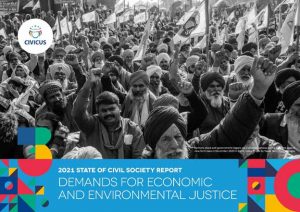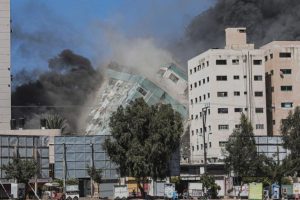Written by Rem Bahadur Biswakarma
It has been twelve years since Nepal became a federal democratic republic. The monarchy which was constitutionally considered as a symbol of Hindu feudalism was abolished on 3 June 2008 for Nepal to become a republic. Politically this was a historic achievement for Nepal and Nepali people celebrate this day like a festival. However, time has come not only to celebrate but also to review the achievements of the republic. It is time to have a serious discussion on the purpose and implementation of the republic. Politically, the republic has many achievements. Structural changes have taken place. However, in the republic, if we are to look at if Dalit’s expectation has been fulfilled, Dalits do not experience any difference in their daily lives as it was in the feudal monarchy.

Dalits community with thirteen percent of Nepal’s population had dreamed of a non-discriminatory and dignified life in the republic. Dalits had imagined end of centuries of discrimination, exclusion, exploitation, oppression and creation of a beautiful Nepali society. Freedom, justice, equality, and self-esteem were expected. But the economic condition of Dalits is in disarray. Political representation has increased to some extent but has not reached a decisive role. Contrary to their dreams, Dalits are being subjected to discriminations, threats, killings and atrocities every day. Whether it is the massacre of Dalits recently in Chaurjahari of Rukum or the murder in Rupandehi due to inter-caste marriage, all these incidents have killed equality, justice and freedom. The self-esteems of Dalits have been mocked. In a few words, Dalits have not been able to experience any basic dividends of the republic.
It is not that there has been no change. Although some reforms have been made in part, radical social and cultural transformation desired by the Dalits does not seem to have taken place. Politically, it was not a big deal for some Dalits to be elected at the federal, provincial and local levels. Whether their representations have changed the balance of state power or caste balance in the structure, or whether it has created an environment for Dalits to exercise their rights, does not seem to have changed that much. Dalits alone wishing is not going to change the caste-based power balance in Nepal. Consequently, Dalits are still subjugated to certain caste group’s dominance of ruling power.
Dalits have made sacrifices in every political struggle in Nepal for the establishment of democracy. Whether it was for the bringing down the autocratic Rana regime in 1950, restoring democracy in the 1990s and in the decade long people’s war ending in 2006. For Dalit to participate in these political struggles meant ending the prevalence of Hinduism in Nepali society. Putting end to the discriminatory Hindu caste system based thoughts, behaviours and influences. The greatest political challenge in establishing the republic and realising social transformation was changing the traditional power structure. But due to the failure to achieve the expected political outcome in the current republic Dalits still feel that they have been subject to casteists rule.
For a long period in Nepali history, the Hindu casteist regime was in power. Dalits were systematically deprived of access to power and excluded from the mainstream. They were forcibly evicted from the mainstream economy and forced to live in extreme poverty. Some were treated as slaves by the ruling caste while some Dalit women were even sexually exploited. For a long time, the state government has created a situation where Dalits are still trapped in the vicious circle of exploitation. Nepal’s Dalits expected freedom from such discrimination from the republican state system. But those expectations have completely turned into empty dreams.
Even in the republican system, the attitude of the ruling party and those in power towards the Dalits has not changed. The political parties that came from the revolution are leading the current government, but they still tell the Dalits to agitate for Dalit political movements for Dalit’s rights. This means that the movements in the past were only to bring non-Dalits to power. The party leading the republican movement with the slogan of establishing democracy for all should answer, were the movements of Dalits for various political changes useless? Do Dalits have to make sacrifices in the movement for power and opportunity for the Brahmins and the upper class? But after coming to power, can their sacrifices be ignored? Due to the political revolutions and the Dalit movements, there have been anti-discrimination constitutional provisions against the Dalits, and acts have been enacted.
It has been 57 years since the Civil Act of 1963 made untouchability a punishable crime. The parliament of Nepal has already declared Nepal as an untouchability free nation on 7 June 2008. Nepal is a party to various conventions on human rights, including the Convention Against Racial Discrimination and Untouchability. The National Criminal Code 2017 and the Untouchability and Discrimination (Fault and Punishment) Act 2011 have also been promulgated. In the preamble of the Constitution of Nepal 2015 itself abolition of caste-based discrimination is mentioned. Article 24 puts an end to untouchability. Article 40 has provisioned for the basic rights of Dalits. But what kind of democratic system is that when Dalits have to agitate and start a movement again for the fulfilment of those rights? What kind of republic is that?
The other day on 20 May 2020 in the parliament the political leaders gave answers to the questions raised with regard to the government’s policies and programs. At that time, Dalit member of parliament Krishna Bahadur Thapa of Gandaki Province had raised the issue of protection of the perpetrators of caste-based discrimination. Mohan Kumar Sunar, a resident of Pokhara Metropolitan City-16, was socially discriminated by local non-Dalits. The Prime Minister replied that Nepal is no longer untouchable, it is an untouchability free Nepal. But a few days later, on the night of 23 May, four people, including a young Dalit man Nawaraj Biswakarma of Jajarkot Bheri Municipality-4, Ranagaun, were beaten to death by villagers in Rukum West Chaurjahari Municipality-8 with regard to a marriage proposal. Similarly, 25 incidents of caste-based discrimination to-date during the lockdown period has been recorded by the Jagaran Media Centre’s Dalit Human Rights Incidents monitoring. This shows that the Prime Minister has not been able to fulfil his own answers.
The government seems equally irresponsible in forming a government mechanism that works in the interest of Dalit rights. The National Dalit Commission, Development Committee and Badi Development Board are in disarray. There are no resources, no officials provided for these Dalit’s interest institutions. Why is there this negligence in these institutions set up for working in the interests of the Dalits?
Caste-based discrimination problem is found not only in a village in Nepal but also at national and international levels. The Dalit community is also suffering from caste-based untouchability and discrimination in countries like Australia, UK, Canada, Europe and USA. Dr. Ambedkar, a famous Dalit leader from India had said, “The caste problem is complex in practice and in theory. This has become just a local problem. If Hindus and Brahmins go to any part of the world or country, caste and untouchability go together. And gradually the caste system becomes problem of the world. ” That is to say, what Ambedkar said about the caste system and discrimination reaching wherever Brahmins go seems to have been confirmed.
State power is the most important. Power institutionalizes or eliminates discrimination, so it builds social order. In the case of Nepal, the state system so far has been run by Khas Arya with authoritative psychology. They have captured all the power structures of the administration, the judiciary, the media, the religious institutions in their interest. Even after the establishment of the republic in Nepal, the rulers have changed but the nature of Dalit’s discrimination is the same. The reason for this is the racist and Brahmanical monopoly of the rulers and the maintenance of certain caste dominance.
After the demands for identity and inclusion began to rise strongly in the people’s movement of 2005 – 2006, Khas Arya started many conspiracies to maintain their dominance. As a result, a situation was created in which the identity of Khas Arya was constitutionally established and they became a participant in the reservation. Ironically, Nepal is the only country that gives reservations to the rulers.
In a democracy, everyone should have equal ownership, status, belonging, participation, justice and freedom. But the situation in Nepal is the opposite. The Khas Aryas of Nepal have a great illusion that this country, Nepal, was saved, built and developed by their ancestors. It is found that the historical documents have been prepared in such a way that there is no role and contribution of other communities. Attempts have been made to prove the same. History is written that way. And that’s how it is taught.
In Khas Arya’s 15,000-year-old book it is written, “If Khas Arya had not contributed to the salvation of this country, without Khas Arya’s sacrifice, not even a pinch of Nepal’s soil would have existed. That soil would have been trampled by foreigners. An attempt is being made to score a goal at the goal post by tying the hands and feet of those who are struggling, hardworking, intellectual and skilled. That effort is unfortunate for everyone. The community that contributed to the language, education, and independence of the country.” In order for the Nepali society to flourish, spread and develop in the form of democracy and prosperity, it is necessary to change the Bahunistic thinking, attitudes and ideologies. That is why it is necessary to end the Brahmin domination in Nepal. The lack of development of the republic and the Dalit community in Nepal is due to the dominance of the Brahmins.
(Rem Bahadur Biswakarma is the President of Jagaran Media Center (a Dalit media NGO based in Kathmandu, Nepal). He has been active in social and Dalit movements in Nepal for more than 25 years. Email: bkremnepal@gmail.com)




